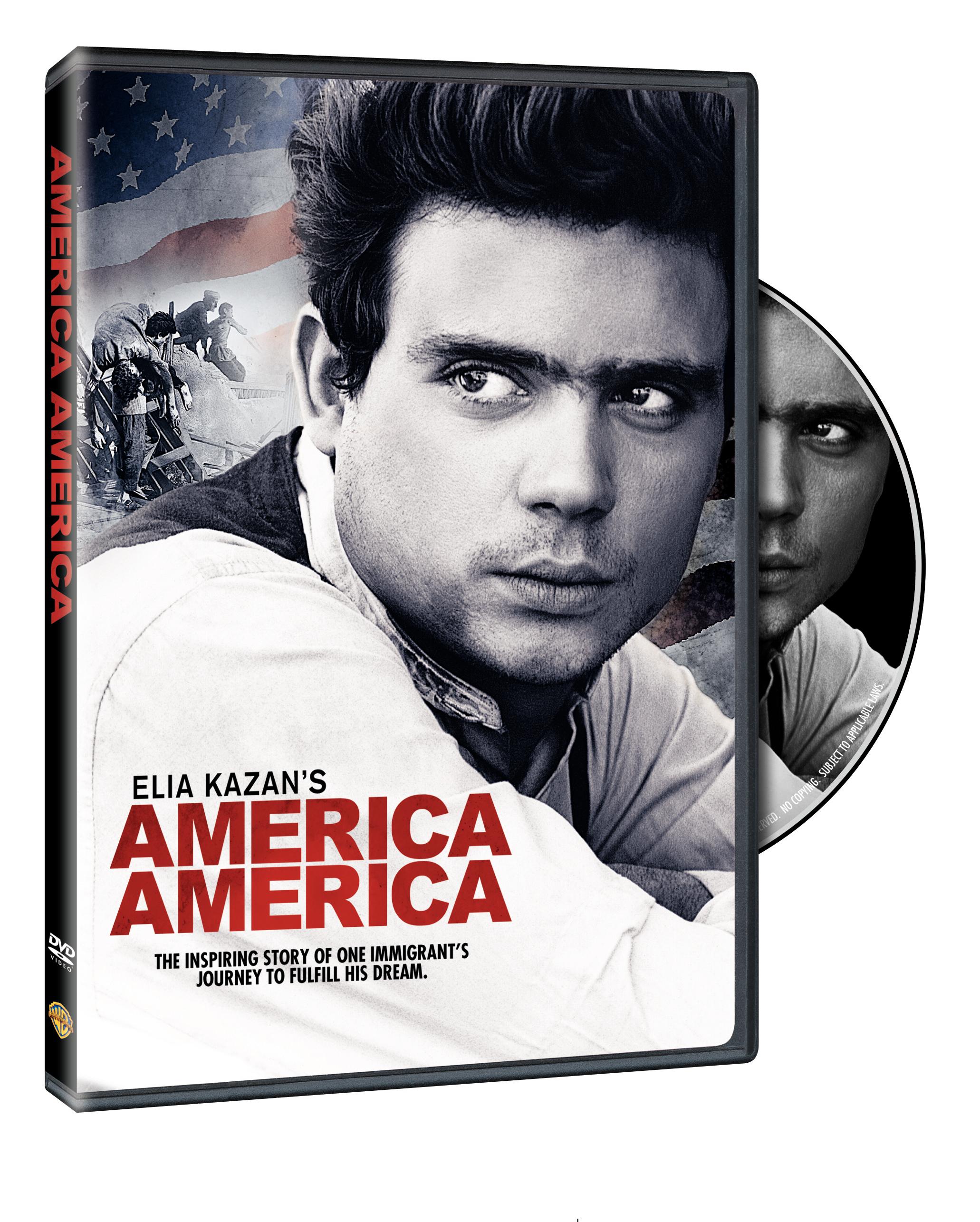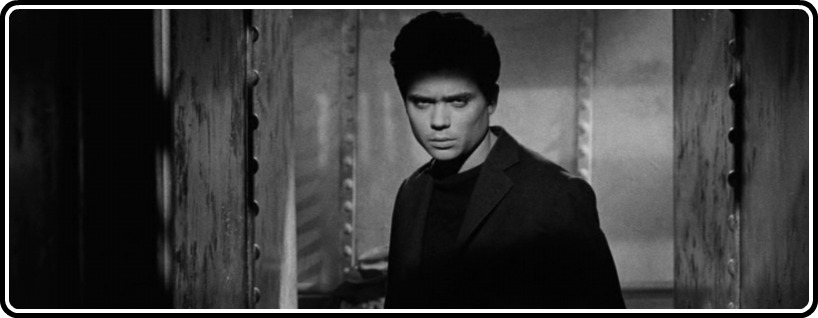Elia Kazan’s deeply personal and ambitious epic America, America is based on his uncle’s immigration to America from Turkey at the turn of the twentieth century. Right at the start of the film we are aware of the director’s direct connection to the material when he introduces himself through voiceover narration, giving us a bit of historical background. This is the only film that Kazan aligns himself with in this way; it is not something I can recall another director doing. Finally getting a DVD release, film buffs should make a point to seek this one out.
America, America is a film that captures the immigrant experience in an authentic yet carefully self-conscious way. Instead of focusing on what happens when our protagonist arrives in America, it tracks his tumultuous journey and escape from his homeland. It is a tribute to the struggles and desperate efforts of the countless trying to flee their homeland, carrying with them the fate of their family. On the other hand, this is the individual story of Stavros Topouzoglou (Stathis Giallelis), an oppressed Greek living in Turkey whose journey to America allowed Kazan to be the artist we revere today.
At the start of the film, Stavros is a Greek living in Turkey where Greeks and Armenians are oppressed. Stavros dreams of going to America. His father Issac (Harry Davis) eventually entrusts him with the families few valuables including money, rugs, meat and jewelry. Issac tells Stavros to travel to Constantinople and meet with his cousin who owns a carpet business. Once there, he can make enough money to slowly transport the rest of his family to the city one by one. His subsequent experiences are arduous and plentiful. He deals with a number of hardships including theft, betrothals, hard labor, affairs and poverty. By the time the film ends, we understand that America was not simply a place that represented prospects. It was a place of importance because it was an alternative to the often harsh realities the immigrants came from. Hardships certainly existed in America too, but Stavros (and the film) is not concerned about what happens once he arrives; all the importance is placed on what it takes to get there.
The film is also about the process of growing up, which is the driving force of Stavros’ arc. When Stavros beings his journey, there are two people who exploit his naiveté. The first is a Turk named Abdul (Lou Antonio) who clings onto Stavros for as long as he can, slowly stripping him of his possessions. The second is a prostitute who steals all the money he spent six months saving by doing dangerously hard labor. Stavros’ smile, a visual motif, makes him open and vulnerable. After this, he grows a mustache and makes a point of never smiling. It is his way of protecting himself. It is hard to take seriously as his very earnest efforts are pretty amusing because his new demeanor is so clearly against his nature. When Stavros finally reaches a happy medium, it is triumphant to see him allow himself to be who he is. The emotional journey and process of growing up is all reflected in whether or not Stavros allows himself to smile.
Stathis Giallelis who plays Stavros, is critical in the audience’s capability to relate and attach ourselves to the protagonist and his plight. This is an openhearted portrayal of a man who has a lot at stake and who is susceptible to human error. Kazan puts a lot of emphasis on Giallelis’ face and it pays off, giving the film the humanistic power it needs.
In America, America, Kazan contrasts realism and conscious storytelling. The realism is represented through the ‘true story’ aspect and the on location shooting in Turkey and Greece. The conscious storytelling comes in through the sprinkles of melodrama throughout and Kazan breaking the fourth wall, provoking the audience’s awareness they are watching a film from the moment it starts. This contrast is also seen in Dede Allen’s editing, used to represent mounting and unmanageable anger. There are scenes traditionally edited placed against scenes that are boldly and dynamically edited with startling results. America, America is a technical standout from top to bottom. Haskell Wexler’s stark use of black-and-white stunningly compliments the film. He highlights Stavros and his families living conditions avoiding any superficial embellishments. The art direction by Gene Callahan, winning the film’s only Oscar is spot on, making the most in contrasting the lower and upper classes.
America, America’s only special feature is a commentary by Foster Hirsch. He starts off by claiming himself to be the foremost champion of the film. His attachment and contextualization to the film are admirable, making for a serviceable if not particularly standout commentary. America, America’s exceedingly slow arrival to DVD is a shame, but its current availability should be celebrated and taken advantage of. Parts of the film do not work and it is not completely consistent. These are relatively easy to overlook though, and anyone who is a Kazan fan needs to seek this out. Not only is it an important film in the context of Kazan’s career, but it is a wonderful epic that stands on its own as a compelling tale of maturity, family, immigration and hope.





![Bergman Island (The Criterion Collection) [Blu-ray]](https://criterioncast.com/wp-content/uploads/2022/11/bergman-island-the-criterion-collection-blu-ray-400x496.jpg)
![This Is Not a Burial, It’s a Resurrection (The Criterion Collection) [Blu-ray]](https://criterioncast.com/wp-content/uploads/2022/11/this-is-not-a-burial-its-a-resurrection-the-criterion-collection-blu-ray-400x496.jpg)
![Lars von Trier's Europe Trilogy (The Criterion Collection) [The Element of Crime/Epidemic/Europa] [Blu-ray]](https://criterioncast.com/wp-content/uploads/2022/11/lars-von-triers-europe-trilogy-the-criterion-collection-the-element-of-400x496.jpg)
![Imitation of Life (The Criterion Collection) [Blu-ray]](https://criterioncast.com/wp-content/uploads/2022/11/imitation-of-life-the-criterion-collection-blu-ray-400x496.jpg)
![The Adventures of Baron Munchausen (The Criterion Collection) [4K UHD]](https://criterioncast.com/wp-content/uploads/2022/11/the-adventures-of-baron-munchausen-the-criterion-collection-4k-uhd-400x496.jpg)
![Cooley High [Criterion Collection] [Blu-ray] [1975]](https://criterioncast.com/wp-content/uploads/2022/11/cooley-high-criterion-collection-blu-ray-1975-400x496.jpg)
So many years after “America America” was released, it will be difficult for many people to grasp what a bold venture this really was. As reputable, and frequently successful as he was, Kazan nevertheless had great difficulty getting the funding to make the film. The success of his previous effort, “Splendor in the Grass” had some effect on the studio’s willingness to help him to some degree; however, the execs apparently never had any faith in the commercial potential of the film and before and after its completion, they never supported the venture as they would one of their major “A-Movies”. When it hit the theaters, there was little fanfare and very little promotion. Fortunately for Kazan, foreign films were enjoying unusually widespread distribution and success in the U.S. in the Art Theater circuit. Most of the bookings for “America America” were in those very theaters, but even there, it did not do very well in terms of ticket sales. It had the feel of of foreign film, lacking American star players, shot on location, much of the dialogue dubbed. Furthermore, it is an intensely personal statement by its director at a time when most Hollywood pictures were really more like corporate commercial projects. It had a very foreign, exotic feel throughout, centering around a character who was frequently far from heroic in his behavior, which was uncommon in domestic productions. It has always struck me as something of a miracle that such a picture, produced on such an ambitious scale was ever produced and released by a major outfit like Warmer Brothers. This is probably a testament to the incredible determination and force of will of Elia Kazan himself, who clearly cared so fervently about bringing this amazing story to the screen and to American audiences. After so many decades, I was thrilled to at last see it become available in a quality DVD edition. It truly is a rare, one-of-a-kind treasure in the history of cinema.